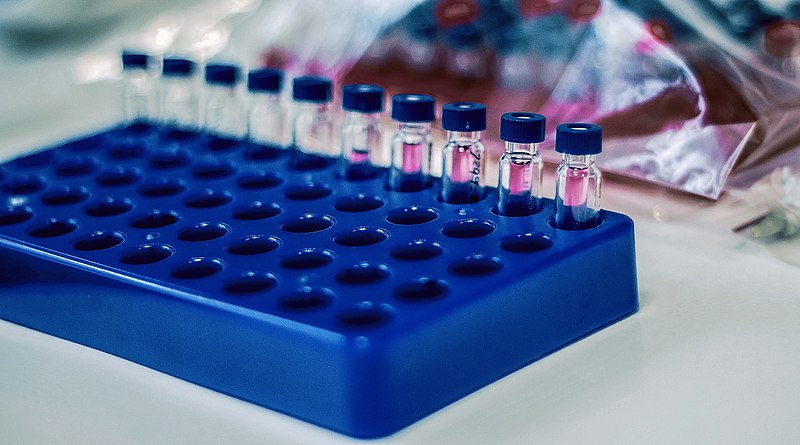Food safety will always be an issue that stakeholders of the food industry, regulatory bodies, and even consumers are very concerned with. Safety challenges keep popping up by the day and manufacturers are working ceaselessly to ensure their products overcome these challenges.
But how do they ascertain that their products are safe? This is where analytical testing comes in. Manufacturers often hire analytical testing services to check how safe their products are.
The role of analytical testing in the manufacturing of safe products cannot be overemphasized. If you would like to learn more about this, then we advise you to keep on reading. Because in this read, we will be discussing just how important analytical testing is for food manufacturing.
But before we go into all that, let’s answer a question we are sure is burning in your mind.
Analytical Testing – What exactly is it?
Analytical testing is a term that covers a wide range of techniques used to classify a given sample’s characteristics or chemical makeup.
This procedure is used in several industries ranging from electronics to pharmaceuticals, biotech, food, personal care, environment, and so on.
Our focus in this read is how this procedure is used in food manufacturing. Hence, we have to mention that this particular industry has over time improved several analytical techniques to help combat the new challenges in the sector.
As a result, higher sensitivity has been developed so that contaminants that were once hard to detect can now be easily detected. Now, let us look at some ways this procedure has helped this industry.
Microbial Contamination
Once food safety is mentioned, everyone tends to first consider microbiological concerns. Now, foodborne sicknesses which are linked with campylobacter, salmonella, and Listeria monocytogenes have been drilled into the consciousness of the public.
In 2013, several media coverage and news were dedicated to throwing more light on Listeria monocytogenes discovery in salads. You can visit https://pubmed.ncbi.nlm.nih.gov/1943998/ to learn more about Listeria monocytogenes.
Due to this consciousness, the consumer’s trust has been greatly compromised. Hence, the industry has to work harder and better to ensure this trust is restored. Analytical testing is the vehicle through which it does this.
This also brings us to our next point.

Meeting the Ever-Changing Needs
As we said above, most consumers’ trust has been compromised, hence their needs are equally evolving. Public concerns are growing daily, so the regulations are equally increasing. Hence, the need to get meaningful data and faster results are typically also increasing.
All these needs are being met through analytical testing. The 5th edition of Food Micro stated that in 2010, the United State food industry collected about two hundred million microbiology tests.
This would only keep increasing with time as more sensitive techniques and methods are being developed. This has caused a great revolution in the industry. Chemical analysis has become an integral part of many safety and quality programs. Some concerns in this aspect involve heavy metals, environmental pollutants, economic adulterants, toxins, pesticides, and veterinary drugs.
With techniques like gas chromatography, liquid chromatography, and mass spectrometry, producers can now discover chemical contaminants even at low concentrations.
This has helped to increase the confidence in this industry’s production and supply. Surveillance quality has been improved thanks to the development of some methods that allow multiple substances to be analyzed at the same time.
While there may be some drawbacks, the industry has come a very long way. As they continue to evolve, more methods to cover more depth and scope will be developed.
New Directions
Ingredients that are yet to be declared as well as those that are unwanted can sometimes intentionally or accidentally get into foods during processing. You can read this to learn more about food processing.
When this happens, targeted tests will not be able to detect the issue as targeted tests are useful when the given chemical compound has already been discovered or declared.
So, the need to develop non-targeted testing procedures has given rise to data analysis and analytical instrumentation improvement. This way, a sort of “fingerprint” is created for ingredients. These base fingerprints are then contrasted with the data gotten when new products are tested.
More technologies are now being tried for non-targeted testing. For example, recently, PCA and LC-MS/MS were combined to identify unadulterated and adulterated foods. Aside from this, other technologies like nuclear magnetic resonance have been used to identify materials that are potentially adulterated.
Conclusion
New technologies are being developed when it comes to analytical testing and food production. Things that were once beyond the industry’s grasp are now being attained.
Food safety has improved and will only keep improving thanks to these amazing technologies. Sensitive, rapid, and accurate testing methods have helped to revolutionize this industry. Not only has food safety been improved, but also these technologies have made stakeholders in this industry more alert.

Leave a Reply